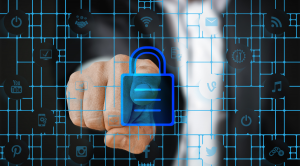Address Loop: What It Is and How to Use It
What is a loopback address?

A loopback address is a mechanism that allows a computer to communicate with itself. Instead of sending data out over the network, any packets sent to the loopback address will return to the same device. This is an extremely useful tool for testing applications, configuring network systems, or understanding how devices exchange data.
Understanding the loopback address and how it works will give you a simple yet powerful tool that is widely used — from basic testing to advanced engineering work.
How a loopback address works
Think of the loopback address as a “mirror” of the network — where the computer can send signals to itself to see if network functions are working properly.
In IPv4 networks, the most common loopback address is 127.0.0.1, while in IPv6 it is ::1. Any data packets sent to this address will not go out, but will be processed right inside the system. Typically, the operating system also defines the hostname “localhost” to represent this address, so when you type “localhost” into a browser or command line, the data will also return to your computer itself.
Uses
Loopback addresses are often used in situations such as:
Testing software and local servers without an Internet connection.
Diagnosing network errors or confirming that the TCP/IP stack is working properly.
Practicing network configuration for beginners without additional equipment.
For engineers or developers, using loopbacks allows them to test services, web servers, or applications in a safe environment — because the data does not leave the computer, avoiding the risk of leaks or attacks from the outside.
How it works in detail
When an application sends data to 127.0.0.1, the TCP/IP stack will:
Identify this as a special internal address.
Keep the data on the machine, not send it through the physical network card.
Resend the data to the correct destination application through the corresponding port.
This process creates a closed feedback loop, where the device is both the sender and the receiver. By not going through the network hardware, loopback tests are almost instantaneous and very stable.
Loopback Interface
A loopback interface is a virtual network interface attached to a loopback address. It works like a real network card but does not require hardware. The operating system creates this interface itself to handle internal traffic.
Network engineers often use loopback interfaces when configuring routers or complex systems, because it still works even if the physical connections are interrupted. This helps maintain visibility and access to critical services.
Loopback Address Range
In IPv4, the entire range of addresses from 127.0.0.0 to 127.255.255.255 is reserved for loopback purposes, although 127.0.0.1 is the most commonly used address. Some experts may take advantage of other addresses in this range to run multiple independent applications on the same machine.
In IPv6, the loopback address has only one value: ::1, which represents the same functionality as 127.0.0.1 in IPv4.
Use Cases for Loopback Addresses
1. In Web Development
Loopback addresses play an important role in the development and testing of web applications. By typing “localhost” into the browser, developers can preview the appearance and functionality of the website right on their personal computer without publishing it online.
This allows them to find bugs, tweak designs, and test features in a secure environment, away from real users. Think of it as a private “sandbox” where all changes are thoroughly tested before going live.
2. In Server Setup and Testing
For system administrators or network engineers, loopback addresses are an indispensable tool when setting up and testing server services such as databases, web servers, mail servers, or APIs.
Running tests on loopback addresses helps them ensure the system can send and receive requests properly before serving real users. If an error occurs, handling it at this stage will be much quicker and less risky than when the server is already in operation.
3. In Network Diagnostics and Testing
Checking for loopback addresses is the first step in diagnosing network problems. Running ping 127.0.0.1 (or ping ::1 for IPv6) will return an immediate response if the TCP/IP stack is working properly.
If the ping fails, the cause is usually internal to the computer — perhaps a misconfigured network, a firewall blocking internal traffic, or a network service being turned off. This helps rule out Internet or DNS issues and focus the troubleshooting on the right place.
4. Tools and Techniques to Help Troubleshoot
In addition to ping, tools like netstat can help identify which applications are listening on the loopback interface. Traceroute can also verify that packets are being processed internally rather than being routed out.
In programming, developers often use application logs to detect errors when loopback requests fail. Some common fixes include restarting services, checking firewall rules, or temporarily disabling security software to rule out the cause.
5. Other practical applications
Loop addresses are also used in more advanced situations, such as:
Security testing: Run analysis tools or simulated attacks in an isolated environment, ensuring no impact on the real system.
Device simulation: Engineers can simulate the communication process between devices on a single machine, saving hardware costs when testing.
6. Distinguishing between loop addresses and local addresses
Many people often confuse loop addresses and local addresses in the internal network, but these two concepts are completely different:
Link-local address: Used to connect devices on the same LAN, such as computers and printers. Automatically assigned when there is no DHCP server.
Unique local address: Operates on the private network of an organization or family, allowing devices to communicate internally but not access the Internet.
Loopback Address: Used only for the computer to communicate with itself — completely internal, not related to any physical network.
All three types of addresses can exist in either IPv4 or IPv6, depending on the protocol the system uses.










